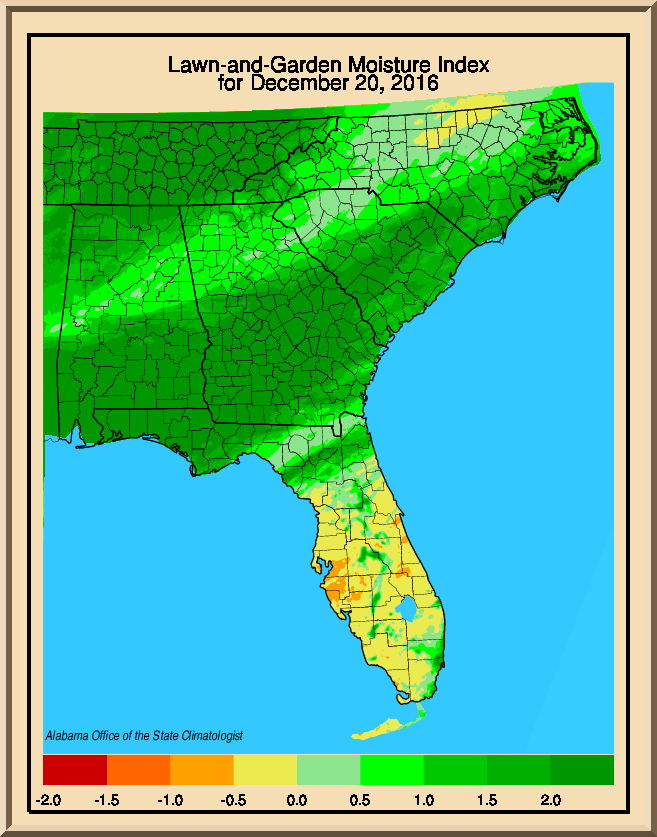The exceptionally dry fall, followed by above average rainfall in December surprised many and it has been problematic for those trying to plant and manage winter cover or forage crops. Many might be wondering if their soils have enough moisture reserve to support a cover crop if you decide to try a late planting. This article provides some guidance on how to assess and track soil moisture without having to purchase expensive equipment. In fact, there are only two pieces of equipment required and the third is optional: 1) your fingers, 2) a rain gauge, and 3) internet access. You can roughly estimate soil moisture by the feel method and the rain gauge will help track future rain events. In addition, internet access will allow you to use some exciting and free AgroClimate tools related to rainfall and soil moisture.
Much of the surface soils (sandy to loamy sand textures) in the Florida Panhandle can hold from 0.6 to 1.2 inches of water per foot depth of soil. We call this the Available Water Capacity (AWC). In comparison, some of our heavier, sandy clay subsoils can hold up to 2 inches of water per foot depth of soil. Details on how to determine soil moisture by feel and appearance can be found in the following NRCS publication: Estimating Soil Moisture by Feel and Appearance
In Florida, you can conservatively assume that your top foot of soil will hold up to 1 inch of water. You also need an inexpensive manual-read rain gauge to track rainfall at your location. During the cold winter weeks ahead, your plants (at full canopy) may lose approximately 0.3 inches of water per week in North Florida and up to 0.5 inches of water, downstate. In comparison, these losses can triple during the summer months. For the sake of this discussion, if it does not rain over the next three weeks, you might lose all available water in the top foot of soil, because the plants had removed nearly an inch of water (0.3 inches x 3 weeks). Luckily, roots are often growing deeper than a foot. Well-managed, cool-season cover or forage crops will have roots reaching below 2 feet, so they likely can extract another inch or more of deeper soil moisture before succumbing to drought.
Remember, the soil drying front begins at the surface and works its way down the soil profile over time. Dry conditions hit plants hardest when you have seedlings with rooting depths of only a few inches, where soil drying initiates. As of late December, the Panhandle had begun to recover from the dry fall and you might find that seeds that did not germinate during the prolonged dry period, are now germinating and establishing (Fig. 1). If the seed had begun developing roots during the drought, then it likely died and will not come back. Remember that exceedingly late emerging plants will likely need a little start-up nitrogen (30 to 50 lbs per acre) to continue growing strong. They have to compete with weeds and the older crop.

Soil moisture forecasting relies on expert knowledge of climate and weather, which is not what most of us are trained in. Luckily, we all have free access to AgroClimate Forecasting Tools. This site allows you to view maps of forecasted temperature and rainfall over short (day) through longer (months or seasonal) periods. After your first visit, you might become a real fan, like myself, and play with their other AgroClimate tools. I recommend the Lawn and Garden Moisture Index (LGMI). This provides a good estimate of current soil moisture conditions for plant growth in the southeast U.S. (Fig. 2).

They even have a drought index, called ARID that you can tailor to your location by providing zip code and choosing among soil types. There has never been a better time to take advantage of what extension and research are reporting and providing in terms of information and personal online tools to help keep you growing!
 0
0
